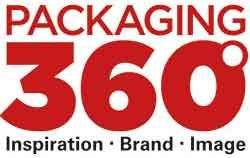Vegan Hack in Sustainable Packaging
For vegan mincemeat, meat producer „Ponnath Die Metzgermeister“ uses innovative MAP packaging: if consumers press the tray together, they can easily separate the components and feed them into the respective recycling cycles.
Beside seven million vegetarians and a million Veganern in Germany also about 17 million Flexitarier seize also gladly temporarily to vegetable alternatives. That motivates to extend their offer also renowned meat producers such as „Ponnath Die Metzgermeister” . Recently the offer pallet was extended by veganes hack. The Ponnath Group found the right packaging solution in eTray, a joint development of Sealpac and Jaun Neoform. The fiber-based packaging in a modified atmosphere (MAP) consists of two components: a printable cardboard blank and a thin plastic inlay that only serves as a sealing and functional medium.
The design of the eTray tray is such that the required material separation into cardboard and plastic can be easily achieved after product removal. The tray only needs to be compressed. Both components break apart and can then be disposed of via the appropriate recyclable material collections. Both components of the eTray packaging are 100 percent recyclable.
Conserving resources
The amount of plastic required for the dimensionally stable and process-safe shell is 40 to 60 percent less than for conventional MAP shells. For this innovative resource-saving solution, mono-propylene is used instead of polyethylene terephthalate (APET). It thus complies with the new guidelines of the food trade. The fact that the cardboard carrier can be printed on both sides offers users like Ponnath plenty of room for communication – in addition to product information, for example, it also provides information on the disposal of packaging components.
Ponnath uses a Trayselaer Sealpac A7 with a 5-cavity mold to process the trays in the 190 x 144 millimeter format at the Freiburg plant. This machine and sealing tool configuration gives the company a high degree of flexibility in application, as it can also be used to seal conventional 190 standard trays. The trays are stacked and filled fully automatically in the packaging process at a high cycle rate.




